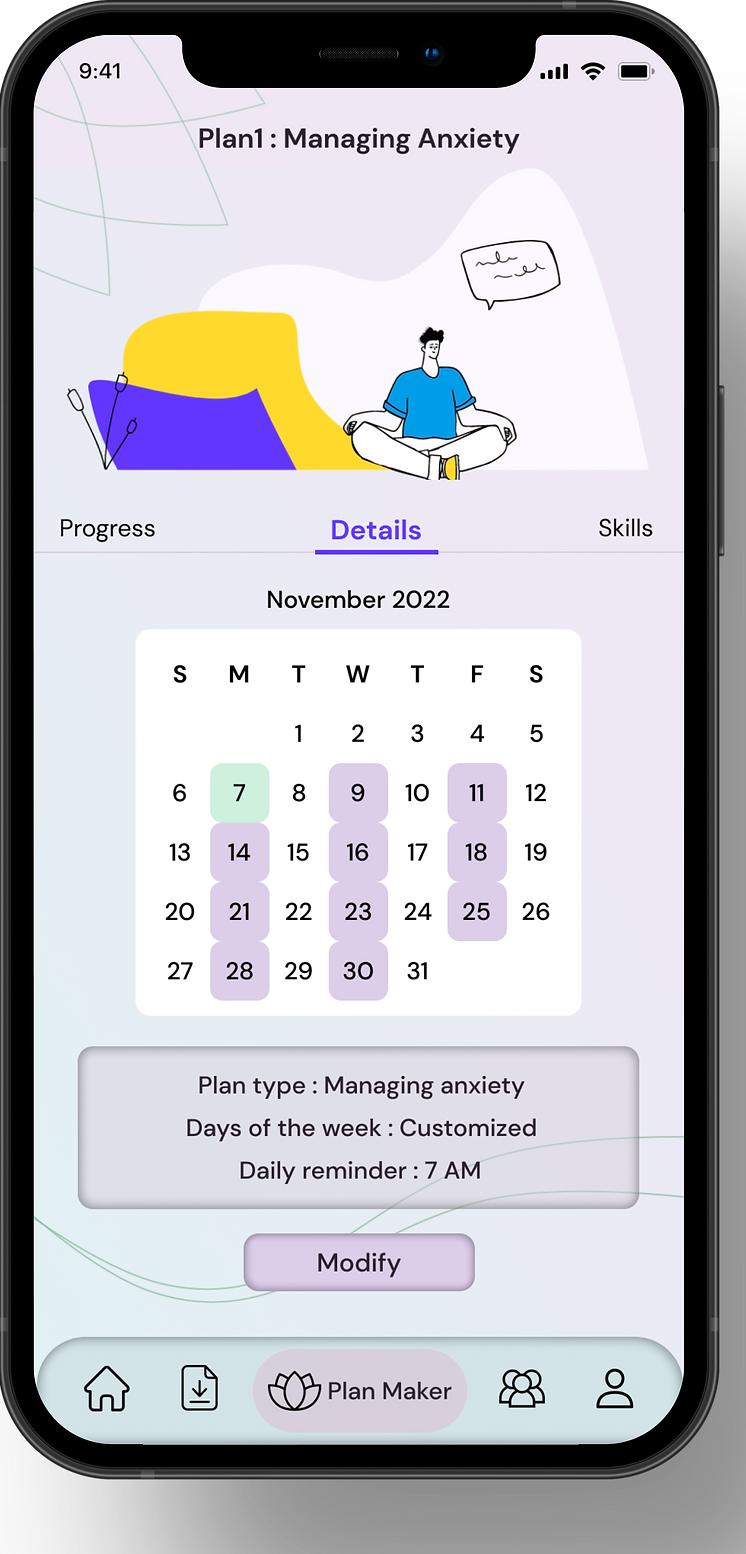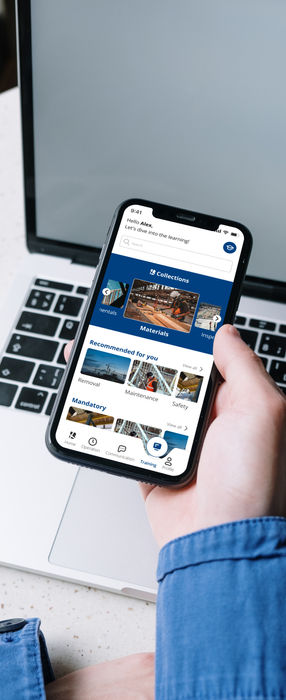
Padma
Padma was conceived during the challenging times of Covid, when many faced anxiety, stress, and self-doubt. As Martin Luther King Jr. famously said, "Only when it is dark enough can you see the stars."
Finding inner peace amid stress isn't always simple. Meditation serves as a powerful tool to discover an "Oasis of Peace."
An app can greatly assist in meditation and routine development. Padma's goal is to foster global well-being by providing daily meditation, breathing exercises, and mindfulness podcasts.
The name "Padma" derives from Sanskrit, meaning lotus.

Client : Padma
Deadline: 6 months
Role : UX researcher, UX writer, UX/UI Designer.
PMM: Scrum
Problem statement
In times of stress and uncertainty, finding inner peace and maintaining mental well-being can be incredibly challenging. Many individuals struggle to develop and sustain a meditation routine that can help alleviate anxiety and stress.
Solution statement
Padma aims to address this issue by offering a comprehensive meditation application to foster global well-being. The app provides daily meditation sessions, breathing exercises, and mindfulness podcasts, making it easier for users to integrate these practices into their daily lives.

Padma's Value Propositions
-
Customer Retention: Improved retention through tailored meditation practices that keep users coming back for more consistent mindfulness practice.
-
Positive Mental Health Impact: Tangible improvements in user mental health metrics (stress reduction, better sleep quality, etc.) as measured through in-app feedback tools.
-
Data-Driven Insights: Collection of user data to analyze meditation habits and provide personalized recommendations for optimal mental well-being.
Mission statement
"Empowering health promotion and wellness professionals with exceptional resources and services to foster professional and personal development."
About meditation:
The practice of meditation has roots dating back thousands of years in India.
Meditation is commonly characterized as either calming or insightful. There are guided and unguided meditation practices.
Meditation also offers physical health benefits. The primary purpose of meditation is not merely to clear the mind, but to cultivate awareness, allowing us to comprehend our thoughts and emotions and adopt new perspectives.
Challenges
Remote working with different time zones: Our biggest challenge required diligent effort to ensure clear communication and alignment among team members.
Time Constraints: The project's tight deadlines added pressure to deliver results efficiently and promptly. Managing tasks within limited timeframes necessitated effective prioritization, resource allocation, and time management strategies.
Achievements
Effective Sprint Management: Utilized short sprints to manage tasks and deliverables within defined timeframes
Iterative Development: Embraced an iterative process to continuously refine project components based on stakeholder feedback, ensuring continuous improvement and alignment with project goals.
Cross-Functional Collaboration: Facilitated productive collaboration among team members and stakeholders through regular communication.
Efficient Time Management: Successfully met project milestones and deadlines by implementing effective time management strategies.
Business outcomes
-
Enhanced Mindfulness: Users will experience increased mindfulness, leading to improved emotional regulation, focus, and overall mental well-being.
-
User Engagement: Higher engagement levels with in-app meditation coaches, lead to longer app usage times and deeper user involvement in the ecosystem.
-
Subscription Growth: Increased subscriptions to masterclasses, group meditations, and premium content, translating to higher recurring revenue.

-
Customer Retention: Improved retention through tailored meditation practices that keep users coming back for more consistent mindfulness practice.
-
Positive Mental Health Impact: Tangible improvements in user mental health metrics (stress reduction, better sleep quality, etc.) as measured through in-app feedback tools.
-
Data-Driven Insights: Collection of user data to analyze meditation habits and provide personalized recommendations for optimal mental well-being.
HMW
How might we assist users in managing stress, anxiety, and depression to enhance their mental health?
How might we support users in cultivating a consistent meditation practice to establish it as a habit?
How might we integrate various tools into meditation practices to enhance effectiveness?
How might we facilitate group meditation experiences for users?
How might we encourage users to reflect on their feelings and thoughts rather than suppressing them?
Here's a brief overview of the survey results:
60%
Those who had a full-time or part-time job
80%
Those with a prior meditation experience
70%
Those who prefer guided meditation
53%
Those who meditate less than 4 times a week
65%
Those who don't have a consistent meditation routine
Research
We began our research by conducting a 16-question survey in both English and Persian, covering topics such as demographics, meditation experience, app usage, emotions, and pain points.
The survey, created using Google Forms, was shared across platforms like LinkedIn, Slack, and meditation groups on Telegram, resulting in 510 responses.

Survey & Interview
We analyzed the survey results using Google Forms and Figjam, followed by conducting interviews with ten potential users experienced in or interested in meditation and mindfulness apps. They shared insights into their feelings, routines, and challenges.
During the interviews, we delved deeper into their meditation journeys, asking about their experiences in a few words, associated colors or scenes, regular routines, pain points, app usage, difficulties with current apps, preferred meditation types, interest in group meditation, familiarity with mindfulness practices, and more.
Competitive analysis
After completing the survey and interviews, we conducted a competitive analysis of apps mentioned during the research phase and those discovered in various markets.
Key questions guiding the initial analysis included:
-
Who is currently addressing this problem?
-
How are they approaching the problem?
-
What distinguishes their business and products?
-
Have previous attempts to solve this problem been unsuccessful, and if so, why?



The main reason the respondents mentioned for not having a consistent meditation routine:
Lack of time!
Lack of motivation!
Lack of concentration!
No option for a personalized plan tailored to my specific needs.
No access in offline mode!
Poor diversity of audio files!

User Flow Challenges
Our ongoing challenge, highlighted in discussions with clients, was how to integrate all requested features cohesively and simply.
Despite creating various user flows, achieving the optimal model proved challenging.
We hypothesized that concise user flows would be critical in fostering a consistent meditation routine without overwhelming users.
As a team, we explored the concept of increasing app engagement by introducing a customized program. This involved incentivizing user actions such as earning badges for meditation milestones, unlocking Premium version discounts, and enhancing the journaling section with photo and voice capabilities.




Early sketches
We created several versions of Padma sketches, emphasizing the core task of developing a personalized plan.
To achieve this, we developed basic paper prototypes and tested them in person with two potential users.
The test results showed that:
Users successfully completed tasks like creating a custom program, finding group meditations, and masterclasses, and accessing coaches.
Users favored using a calendar to set monthly reminders.
They expressed a need for a filter or sorting feature to easily find specific episodes.
Users preferred accessing key functions through both the navigation bar and the menu.


Padma's branding voice
.png)
Padma's branding is carefully crafted to evoke a sense of calm and tranquility for users engaging with the meditation app. The brand voice is gentle, encouraging, and supportive, reflecting a commitment to mindfulness and well-being. The color palette features soothing shades of light green and light purple, promoting relaxation and harmony. Design elements, such as the lotus icon and wave patterns, symbolize renewal and serenity, aligning with Padma's mission to provide a peaceful space for meditation and self-discovery.


.png)

.png)
.png)
%20(3).png)
%20(1).png)
%20(1).png)
.png)



